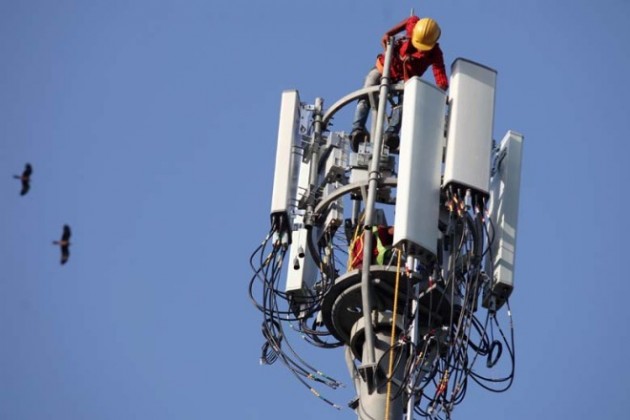American Tower, which is targeting revenue of $7.825 billion in 2020, has outlined growth opportunities.
 American Tower reported 9.9 percent increase in revenue to $1.993 billion during the first quarter of 2020. American Tower said its property revenue increased 10.5 percent to $1.973 billion. Net income increased 2.7 percent to $419 million.
American Tower reported 9.9 percent increase in revenue to $1.993 billion during the first quarter of 2020. American Tower said its property revenue increased 10.5 percent to $1.973 billion. Net income increased 2.7 percent to $419 million.
American Tower’s capital expenditures in the first quarer were approximately $225 million including $32 million for non-discretionary capital improvements and corporate capital expenditures.
U.S. business is expected to represent about 57 percent of property revenues and around 2/3 of property operating profit. American Tower has 41,000 sites in the United States. The average U.S. smartphone user consumed around nine gigabytes per month in 2019.
U.S. segment revenue totaled nearly $1.1 billion for the quarter and grew by $104 million or 10.5 percent over the prior year period. International revenue of $883 million grew by $84 million or 10.5 percent over last year’s levels.
Trends
American Tower CEO Tom Bartlett has outlined major trends developing in the United States.
First, the cloud is going to come closer to the edge.
Second, 5G will be deployed using a number of different spectrum bands, depending upon the specific areas coverage and capacity requirements.
Third, the variety of end-user devices and applications is expected to grow faster. In addition, much of this activity should enable customers to be able to wirelessly transmit data at a lower cost per bit.
“The overall increase in our tenants resulting value proposition, driven by continued 4G and new 5G network deployments on our infrastructure, will continue to increase our NOI yields and returns on invested capital,” Tom Bartlett said.
Major carriers have initially deployed 5G in their own ways. They used multiple spectrum bands, spanning the range from high-band millimeter wave in cities to low band, like 600 megahertz, in rural areas and will ultimately couple with mid-band spectrum to support their customers’ needs around suburbs and highway corridors.
Telecoms will deploy the sub-6 gigahertz spectrum throughout the country on macro towers. Mid-band spectrum will be a critical component of tenants’ 5G networks.
“We expect mid-band deployments will accelerate in the second half of this year as the new T-Mobile builds out more of its 2.5 GHz spectrum,” Tom Bartlett said.
Spending on 4G networks will continue, given that the migration of the user base from 4G to 5G will take a number of years. “As a result, a tremendous amount of incrementally more complex equipment should end up on our towers across the U.S. over the next five to 10 years, allowing our business to continue to excel,” Tom Bartlett said.
The cloud is going to get closer to the edge. “We’re seeing this trend from hyperscalers. What will also be interesting is how the hyperscale and cloud service providers will interact and position themselves with the carriers,” Tom Bartlett said.
American Tower said it is exploring trials and partnerships with different players, including hyperscalers, cloud service providers, carriers, data center companies and equipment suppliers to see how its telecom tower infrastructure may plug into this new environment.
“Using our existing set of assets on the edge data center front, we continue to learn about the rapidly evolving edge ecosystem through our ownership of the metro interconnect facility in Atlanta and initial deployments of several trial edge data facilities at our tower sites,” Tom Bartlett said.
There will be a need for lower latency through distributed storage and compute functionality in close proximity to both wireless and wireline end consumers as information generation and processing progressively moves to the network edge, particularly with respect to advanced IoT applications.
Edge compute offerings may serve autonomous vehicle networks, interactive and immersive media delivery, cloud gaming and any number of other products and services where lower latency is a must and/or data needs to be closer to the consumer machine, creating enough business for American Tower.
While the potential for a scaled mobile edge solution is likely several years away, there are indications of customer interest in ATC assets and are also having conversations with a number of parties that are likely to play a significant role in the edge going forward.
ATC is already a partner of Microsoft for their Azure Edge Zones program. There will be more such partnerships that will help ATC accelerate the development of the edge data model.
ATC is also exploring leveraging carrier-grade Wi-Fi, 4G, 5G and CBRS spectrum to create converged networks. These targeted neutral host solutions can make sense in a much broader array of venues than traditional DAS.





